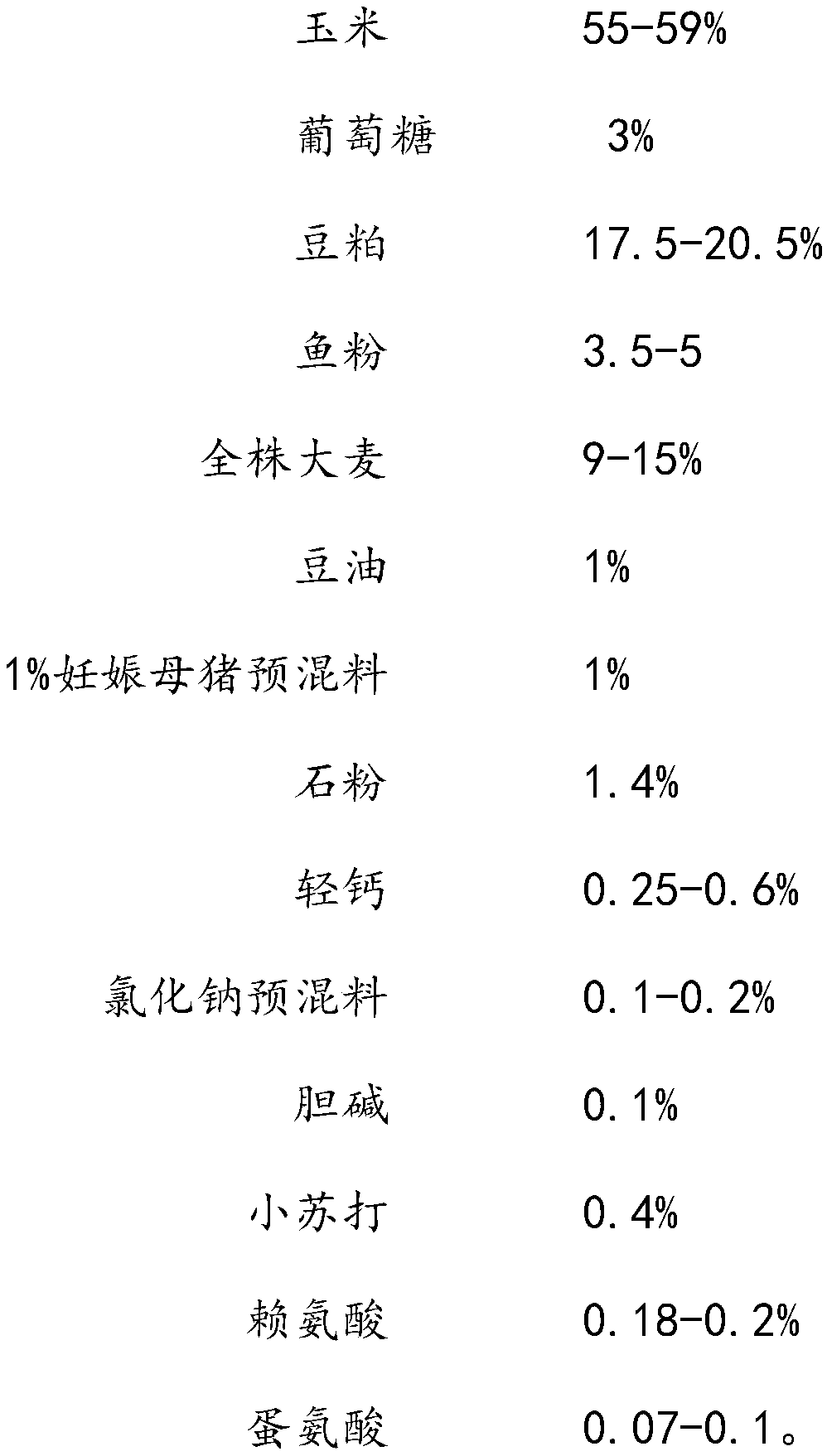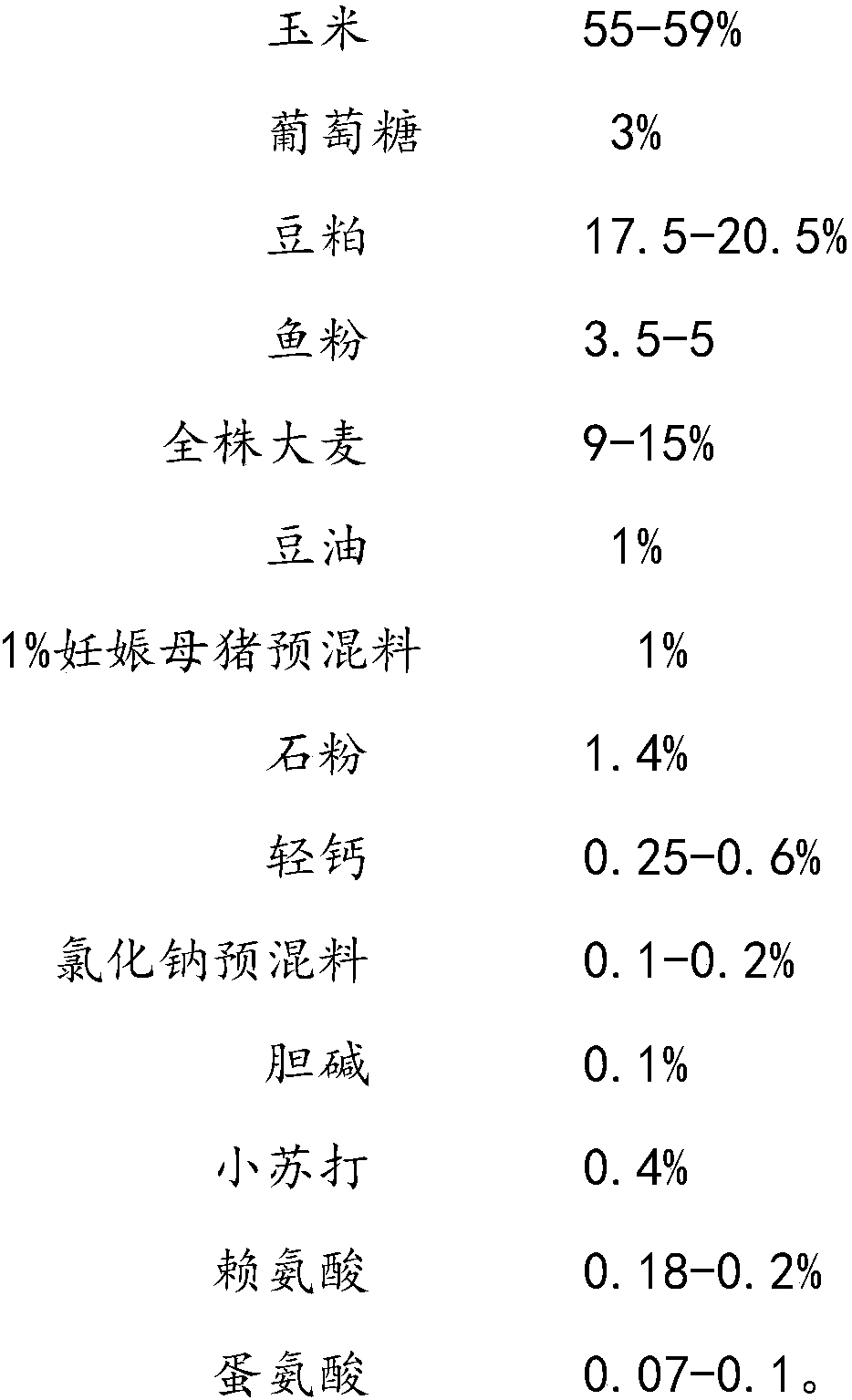Lactational sow daily ration prepared by using whole-plant barley for replacing bran
A lactation period, barley technology, applied in the field of animal husbandry, to achieve the effects of saving storage costs, easy combination of planting and breeding, and improving health
- Summary
- Abstract
- Description
- Claims
- Application Information
AI Technical Summary
Problems solved by technology
Method used
Image
Examples
Embodiment 1
[0018] After many years of follow-up testing of more than 200 barley seeds, stems, barley seedlings, and whole-plant barley samples in many places and varieties, the inventor found that six common mycotoxins in Yunnan barley (aflatoxin B1, deoxynivalenol, gibberella zebras ketene, fumonisins, T-2 toxins and ochratoxins) were rarely detected, and none of them exceeded the standard, and their safety was significantly better than that of conventional grain-based feed materials such as corn, bran and DDGS. The following table shows the measured values of the main nutrients of several kinds of barley and bran (in Yunnan).
[0019] Table 1 Dry matter basis of measured values of main nutrients of barley products, whole plant barley and bran, unit %
[0020]
[0021] It can be seen from the above table that the starch content of barley seeds is twice that of bran, so the net energy level it can provide is much higher than that of bran, and the crude fiber level of straw or whea...
Embodiment 2
[0023] After the whole barley plant matured and dried naturally in the field, when the seed moisture was lower than 20%, the above-ground part was harvested, crushed to 98% and passed through an 80-mesh sieve, and the experimental ration for lactating sows was prepared, and compared with the traditional bran ration, Measure the nutritional level of different diets and calculate the price cost of different diets.
[0024] Table 2 Comparison of ratio, cost and nutritional level between traditional bran ration and whole-plant barley ration for lactating sows
[0025]
[0026]
[0027] Table 2 shows two formulas comparing the traditional bran diet and the whole-plant barley diet for lactating sows. The soybean meal used in this experiment is high-protein soybean meal with a protein content of 43%. From the measured data in Table 2, it can be seen that when the proportion of wheat bran in the diet reaches 30%, the net energy of the diet can only reach 2200 kcal / kg, the crude ...
Embodiment 3
[0029] The traditional bran diets A, B and the whole-plant barley diets C, D were used to feed lactating sows, and the weaned individual weight of piglets at 30 days old, the individual weight of 60 days old piglets and the annual productivity of sows (annual fattening pigs provided number).
[0030] Table 3 Feeding test results of traditional bran ration and whole-plant barley ration Unit: head, kg
[0031]
[0032] As can be seen from the results of Example 3, the use of whole plant barley can completely replace the bran in the diet of lactating sows, and can obtain better reproductive benefits, improve the health status of piglets, and improve the daily gain of piglets. Therefore, when piglets are 30 At the age of weaning, the individual weight of the piglets suckled by sows in the whole plant barley group increased by 34.5%, and the individual weight of 60-day-old piglets increased by 18.7%, and the number of fat pigs provided by sows increased by 32.3% %, greatly impr...
PUM
 Login to View More
Login to View More Abstract
Description
Claims
Application Information
 Login to View More
Login to View More - R&D
- Intellectual Property
- Life Sciences
- Materials
- Tech Scout
- Unparalleled Data Quality
- Higher Quality Content
- 60% Fewer Hallucinations
Browse by: Latest US Patents, China's latest patents, Technical Efficacy Thesaurus, Application Domain, Technology Topic, Popular Technical Reports.
© 2025 PatSnap. All rights reserved.Legal|Privacy policy|Modern Slavery Act Transparency Statement|Sitemap|About US| Contact US: help@patsnap.com



